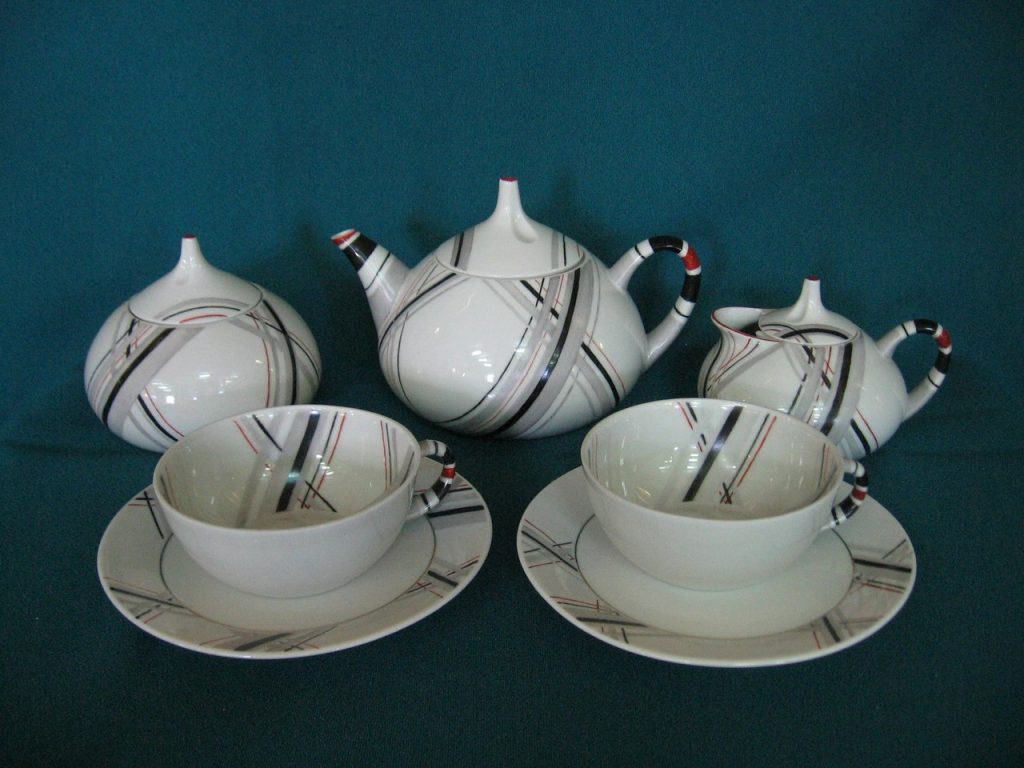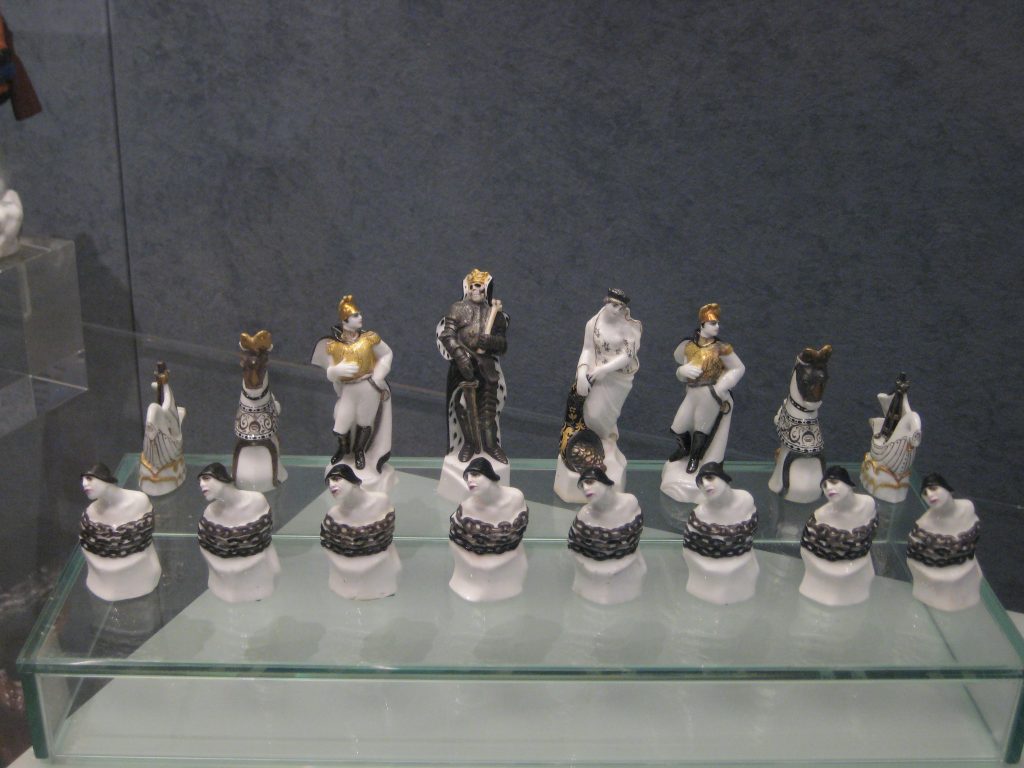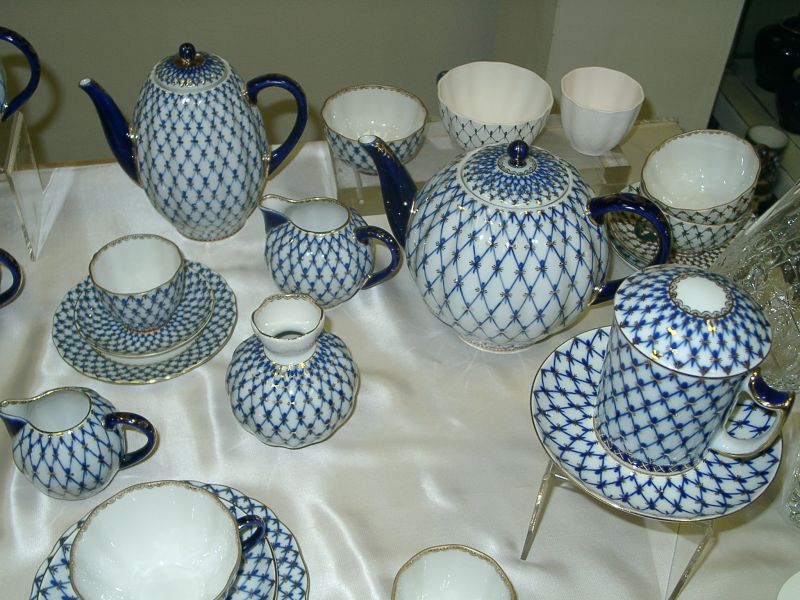Following the 1917 Revolution, porcelain became an experimental material when it came to sports and other propaganda. The Bolshevik Government took over control of the Imperial Porcelain Factory. Once in charge, they located a supply of porcelain plates that had been left unpainted. In turn, these plates were then used to produce propagandist slogans and Revolutionary images.
Contents
The unpainted plates had been marked with what had been the reigning Tsars monogram, under the base. The Bolsheviks ultimately covered these monogram marks with black or green paint.
All these plates then became the canvas for the new Soviet images.
At this time, the most frequent painting on these plates became a celebratory purpose. For the holidays such as:
- May Day
- Worker’s Holiday
- The Anniversary of the Revolution
- Congress of Soviets.
The majority of these plates were designed with the new Soviet symbol of the hammer and sickle. Along with the symbol of the hammer and sickle, one would see a propaganda slogan. The desire to collect the Soviet Porcelain began to build in the 1970s and the 1980s.
As museums in Russia began to want to build their collections from that time period, the forgeries began to be seen.
The Marks

When investing in Soviet porcelain, it is highly important to be aware of the marks and numbers under the base. The overall design of these is very revealing. It is also important to inspect the shape and the form of the porcelain.
Inspecting the painting and the gilding is also a good idea. The original painting and gilding is near impossible to imitate.
The Imperial Porcelain Factory was supported by the Romanov tsars. In 1925, the location was given the name of the Russian Science Academy founder, Lomonosov. However, it was later changed to the Leningrad Lomonosov Porcelain Factory.
There are multiple marks that had been or are being used on the Soviet Porcelain. The Russian Porcelain factories had different marks from the 1950s and forward are listed here, but there are likely many more.
The factories with the well-known marks are the following:
- Ceramics Factory of Aserl Estonia
- Ceramics Factory of Parnu Estonia
- ESSR Tallinn Factory Art Foundation Estonia
- Borislavski Porcelain Factory Ukraina
- Poltava Porcelain Factory Ukraina
- Korosten Porcelain Factory Ukraina
- Sumsk Porcelain Factory Ukraina
- Ternopol’sk Porcelain Factory Ukraina
- Polonsky Porcelain Factory Ukraina
- Baranovsky Porcelain Factory Ukraina
- Dobrush Porcelain Factory Belarus
- Riga Porcelain Factory Latvia
- Konakova Porcelain Factory Russia
- Novgorod Porcelain Factory Russia
- Lomonosov Porcelain Factory, St. Petersburg Russia
- Baranovka Porcelain Factory Ukraina
- Budi Porcelain Factory Ukraina
- Gorodnitsky Porcelain Factory Ukraina
- Kiev Porcelain Factory, Ukraina
Soviet Symbols

Many of the Porcelain marks ranged from the hammer and sickle to crowns and block lettering. Many of these featured the initials of the founder of the factory or the tsar of the time.
The Imperial Porcelain Factory continues to develop under the ruling leaders. Due to this, the markings always included the state symbol, the monogram of the emperor or a coat of arms. Some even included monarchical symbols.
Other markings may have included the recipe number used in making the Porcelain. Later on, the branding took on the style of a two-headed eagle. To make the marks, it was done by pressing into the mass, or in the form of underglaze or overglaze.
When Catherine ruled, the mark became a monogrammed E. Within this Cursive E was also the Roman numeral II. With each change in the elite, the marks on the Porcelain for each of the different houses changed.
Today, the value still rests not only on the Porcelain but also on the mark and the type of mark that was made on the Porcelain. After the Revolution in 1917, there was a vast country that was left without a flag, a coat of arms or even the state symbols. For the first few months, the Porcelain was marked using the year of manufacture. At this period, the name changed to State Porcelain Factory. This is when the double-headed eagle became the emblem of the Russian Republic.
Further marks and brands are due to the political life of the country. Since 2005 the mark that is placed on the Porcelain features the Eagle symbol holding a sword, and a crown is placed over the head of the eagle. The name of the Porcelain Factory was returned to ‘The Imperial Porcelain factory’ with the date of 1744 right below the emblem, At the very lower portion is the name of the town, St. Petersburg. This is the historical name of the Porcelain Factory. The mark is done most often in Cobalt blue and was reduced to a single standard that does not allow for variations.
Since the beginning of Porcelain manufacturing in Russia, the intention was always to use the Porcelain for use at the Royal Court. Before Russia began to manufacture Porcelain, the product had already been known due to trades with foreign countries and private travel.
The Russian Scientist Dmitry Vinogradov discovered the secret of porcelain production and began to produce it as an industry at the time. When the Imperial Porcelain Factory could not satisfy the needs of the domestic market, Porcelain production found great success as more factories began to produce Porcelain. At this time, the first private Porcelain factories began producing products. Painters also found themselves overwhelmed with the painting that needed to be completed.
During this time, each piece of Porcelain had to be hand-painted. This in turn explains why there are some mild and some subtle differences within the same sets. Even though the painting took so much time, there was no thought to minimise any of the design on the Porcelain.
In the 19th Century in Russia, they witnessed a rapid development of capitalist relations. This in turn also made an increase in the number of Porcelain plants and factories. Factories also developed new methods of employment at this time also. At one point in the late 19th to early 20th century, one man began a systematic takeover of Porcelain factories.
From this venture, they were able to produce high-quality tableware in large quantities. Not only did these rapidly produced sets sell well, but they also caused an even greater increase in this man’s business. The smaller Porcelain Factories could no longer keep up with the production being achieved and most were sold to this man, or completely shut down.
Certain Museums are now home to many of this Man’s products. The man’s name? Matvey Kuznetzov. St. Petersburg holds many of the fine pieces of Porcelain that were produced at this time. These pieces reside at the Imperial Porcelain Factory Museum. There is also a very high-quality collection that is held at the British Museum in London.
Meanings

Today, the marks on Porcelain goods are still found. These marks are the way for those in authority to identify the different products in the different Porcelain factories.
In order to identify antique porcelain, one needs to look at the shape, decoration and glazing which will help to determine the maker, this is if there is no mark on the bottom. However, unless it is a forged piece, all makers, all Porcelain factories had a mark that was placed on the underside of their products. Many of these Porcelain Factories had a variety of marks, it was dependent on political life at the time.
When it came to deciding on the marks used, Lomonov used the stylized lettering of the day. As a note of worthiness, the Imperial Porcelain Company always strived to incorporate a heritage along with the design. The creativity of the Soviet designers and painters of the time could not be matched, and many believe still are not matched to this day.
Porcelain remains one of the most sought-after products due to its strength and the beauty it gives. It is important to know that for the first 100 years, Porcelain was made for the Ruling family in the Soviet region. It was also used for the Russian Imperial Court. No matter what you call the factory today, it is and forever will be the leading authority on Porcelain products.
The Imperial Porcelain Factory has designed many of today's antique Porcelain sets. These are highly collectable and worth much money and also the satisfaction of not only owning this Porcelain but being able to lay eyes upon it each day.
The range of Soviet Porcelain products over the last 267 years is phenomenal. These include dinner service sets, figurines, propaganda pieces, tea sets as well as porcelain animals and vases. They also made snuff boxes to look dainty and millions of figurines over time.
Each of those pieces contains the maker's mark on the underside. Whether you are a collector or an admirer, witnessing one of these sets is more than many people have an opportunity to do. To understand that although the marks are many, there were not that many producers of fine Porcelain goods in the Soviet vicinity.




